 Discovering new artefacts from Henry VIII's era, and so far away from England, sounds highly unlikely, but I am an ex-Brit living on the west coast of Canada, and I think I may have found the 'holy grail' of pre-Elizabethan furniture.
Discovering new artefacts from Henry VIII's era, and so far away from England, sounds highly unlikely, but I am an ex-Brit living on the west coast of Canada, and I think I may have found the 'holy grail' of pre-Elizabethan furniture.
I am a retiree, and in December 2016 I was looking for historical items for my daughter, Melanie, who had recently purchased a two-piece upright cupboard with 1703 among the carvings.
My latest find, a highly ornate wood-panelled bench, or settle (we'll settle on the bench word from now on!), was at a weekly auction in Victoria, British Columbia, on Vancouver Island. It was described as 19th century, and I was the winning bidder at a hammer price of $725 Canadian (415 GBP).
It turns out that the auction house were correct in their 19th-century findings, an alteration to the seating boards was made in the late 1800s converting the boards into a hinged trapdoor to allow for storage underneath. I discovered that the two steel hinges were made in a foundry in Stourbridge, England in the 1870s. The rest of the bench remained original, and there began a search through 2017 to identify many features and to identify the initials 'H' and 'C'. Those two wooden initials were surmounted with two wooden heads, male and female. Under the initials were symbols of fertility. There were two outer wooden heads that appeared to be the same person.
The penny dropped one frosty January morning when the History Channel featured Henry VIII and Catherine of Aragon.
Many references to Catherine, or Catalina as she was known in Spain, surfaced as Googled inquiries in the dozens were made by Melanie and myself.
Many of the carvings relate to pomegranates (a symbol for fertility and also a symbol that Catherine of Aragon used), lion paws, armour, and especially the four wooden heads. Both arms of the lion paws are secured into the background panel which contours around them.
The two outer heads are believed to be the same person, Sir Richard Guildford, KG, (1455-1506). He was courtier and bodyguard to Henry VII, extending his services to Prince Henry, and Catherine of Aragon.
The two central characters are wearing jewelled ornate cloaks with decorative headpieces.
Indeed, Catherine's mother, Isabella of Castile (1451 - Nov. 1504), was described as wearing similarly styled cloaks on special occasions.
Ferdinand of Aragon had pretty well evaporated the long occupation of Spain by the Moors. Left behind were a selected talent field of skilled tradesmen, and among them could have been the woodcarver.
There are side panels that feature the distinct Mudejar designs by the carver. His Islamic heritage is still discreetly immortalised in the carving of a five vertical striped flag before it was changed to four stripes in 1492.
Isabella was recorded as carrying the Balas Ruby in a pouch tucked under her forearm when attending ceremonies. That famous spinal royal ruby is the centrepiece of the Imperial Crown to this day.
The portrayal of Catherine on the bench appears to include the famous ruby tucked under her left forearm.
Also, Catherine's body armour on the bench depicts what appears to be a mysterious downward stab indentation to the chest area. including slashing to her left arm, perhaps signs of traumatic times to her young life in England.
The three wood marquetry panels, at centre, are noteworthy. That type of decor was developed in Antwerp and other Flemish centres of luxury cabinet making in the early 16th century. These three examples depict underwater scenes with reversing shades.
The red velvet cushion could well be early 16th century. Four outer fabrics were removed. The outer fabric was late 19th century and depicted scenes of deer and woodland. The fabric next to the red velvet was a royal blue satin material, possibly Elizabethan era. The cushion is filled with horse hair.
Another prominent feature with Spanish significance are the three scallop shells. Displaying the inside of the shells can indicate a determined effort to reflect upon Catherine's future fertility. The scallop shell is the emblem of St. James, and is worn by pilgrims to Santiago de Compostela in northern Spain. In fact, Isabella and Ferdinand founded a hospice there in 1492 for pilgrims.
I suggest that the bench was included in a shipment of personal treasures and horses as a dowry sent by Catherine's parents in 1504, for one thing, Isabella died in November of that year, and Sir Richard Guildford died on a pilgrimage in 1506.
But the 1504 theory has been dispelled by historian Jonathan Foyle to a time frame at least 50 years later. Jonathan replied to my inquiry one year ago, and after viewing an emailed picture said "There's lots going on there, essentially what you have is a detached C17 chest front - or less likely - settle back with added arms (which is clear as they obscure the carvings of the chest front at both ends) made into a very chunky box - settle in the C19." Jonathan confirmed that the fertility symbols were meaningful and that acorns and pomegranates indicated it was a marriage chest. The 'H' and 'C' initials are coincidental, he said. 'There are no royal arms. The marquetry is typical of nonsuch chests made after 1550, often in Southwark where foreigners set up shop outside of the City of London's guild district." Jonathan concluded.
It is my hope that this bench is eventually returned to Spain. and the Spanish monarchy. Further research has to be done to verify our findings.
I recently joined the Tudor Society, and I welcome comments and opinions.
Please contact me at [email protected]
- Flemish style panel
- John and the bench
- the bench
- Catherine’s cloak
- The H and C

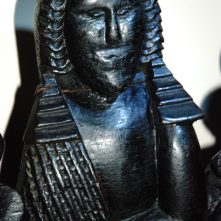

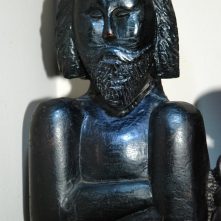
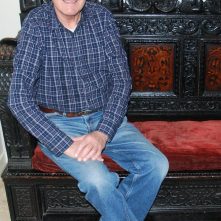

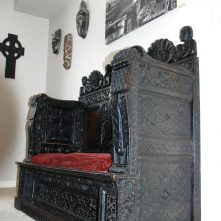
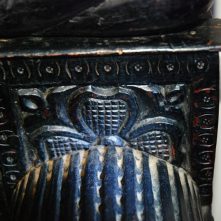
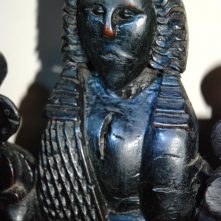
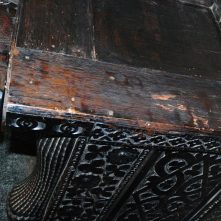
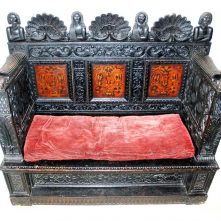
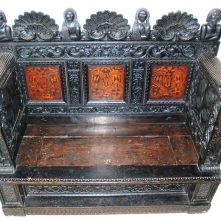
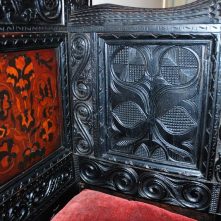

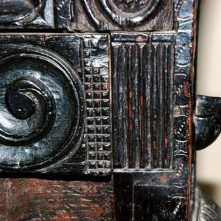
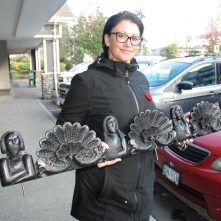
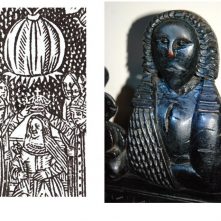
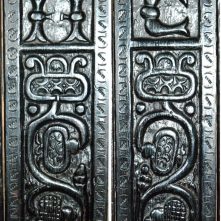
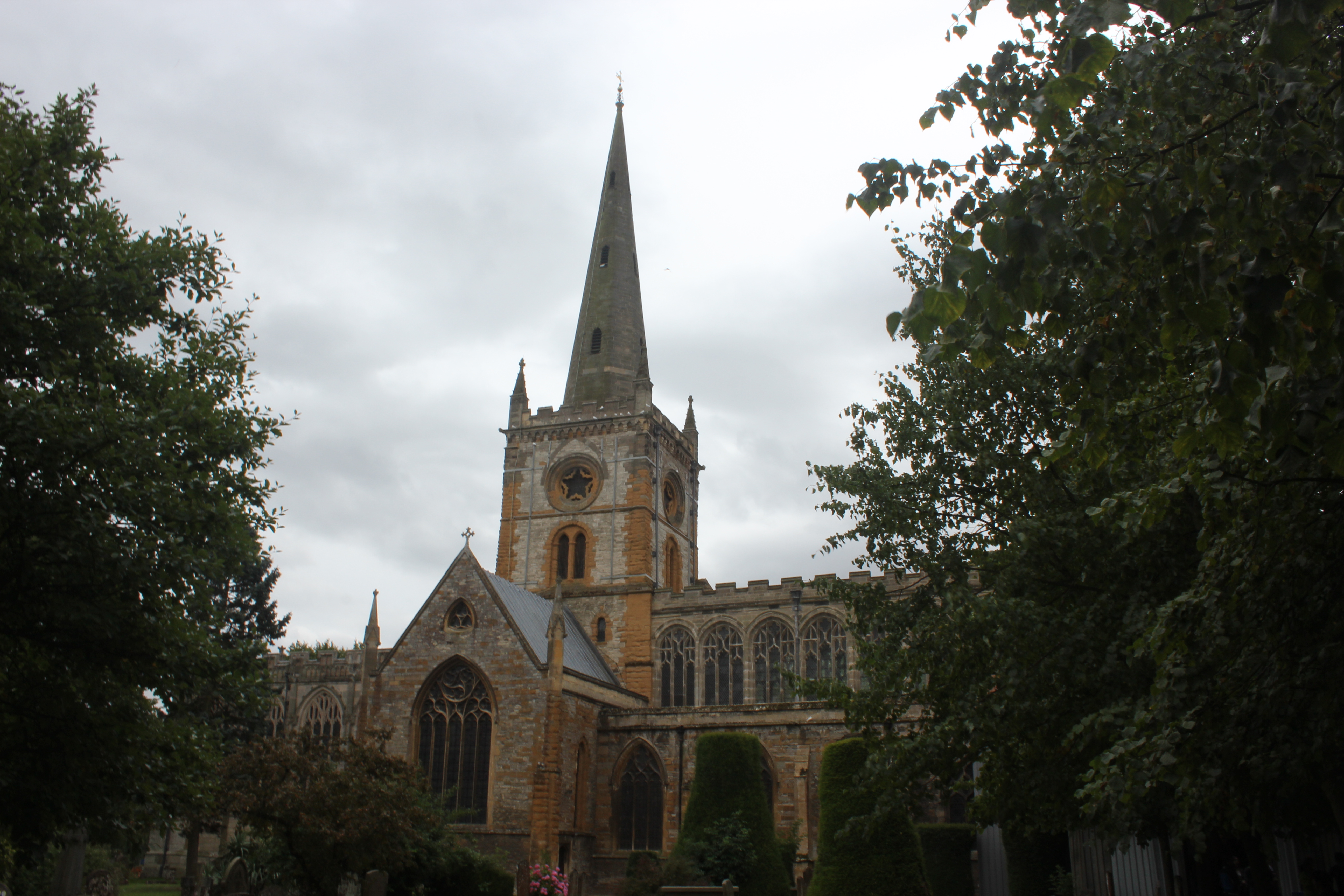

Wonderful research ! Beautiful bench ! Or settle !
Thank you Ana for being the first respondent to my beautiful bench. Your comments are encouraging. – John.
This is truly an awesome find and so compelling! Thanks for reporting on it John. What are you doing to find the appropriate experts to assist in any verification process?
John contacted Jonathan Foyle and I’m going to be contacting Simon Thurley and Historic Royal Palaces. I’m also going to see if I can find out who to contact here in Spain with it possibly being linked to Spain.
They are great contacts! In case it just might help – even though they are Americans – this set of brothers are highly renowned as antique furniture experts. I think each held high positions at Sotheby’s and Christies. They might be worth reaching out to. They are always looking for hidden treasures. https://en.wikipedia.org/wiki/Leigh_and_Leslie_Keno
Hello Sandra. This is the first mass showing of this unique item. I am sure with the help of Claire and society members, we will soon have this bench verified. – John.
This was surprisingly, in the Borax Mansion in Death Valley, around the year 2000 when I saw it, in the open, touching distance away. There was no attempt to preserve the integrity or age of the piece, and was told by the guide merely that had belonged to Catherine and Henry VIII.
It’s done in the Grotesquestyle, a favorite at the Tudor Court.
Thank you so much, Jordan, and it’s interesting that the Borax Mansion linked it to Catherine back then.
That Tudor bench I will never forget and never got it out of my head Why it was there. Had they purchased it merely to leave it in a mostly uninhabited mansion. Would love to know the whole story, having stood 4 feet from it.
John, Good luck and keep us posted! We are all hoping it’s the real deal! Even if not Catherine’s – it’s pretty amazing.
Wow, what a find! I’m green with envy! I hope it’s the real deal, too. Even if not, you have a great piece. Thank you for sharing!
What a beautiful piece of furniture. What a wonderful find. Good luck in your work to authenticate it.
Wow! congrats to you and your family John !!
I am so excited a fellow British Columbian found this and over here too…wow!!
keep us posted about this wonderful find .!
Where are you in B.C. Linda?
Really interesting
Hi there I thought you may find this recollection interesting I was once in 1976 yrs ago looking after Diane Duchess of Newcastles grand daughter She had in her possession Catherine of Aragans wedding chest The chest was about 4 foot long very black & ornately carved If you could track it down you may be able to compare.
Thank you Susan for your advice, I will attempt to check this out. – John.
Just curious…have you made any progress on the verification?? Thank you for sharing!
After two years of deep study and research, I have relented to a period of uncertainty and frustration.
Daughter Melanie still polishes this amazing bench but it’s rich history still remains within it’s ancient wooden secrets.
Thank you for inquiring Jessica. – John Roberts. [email protected]
I really wish it was hers 😭😭 I need to see more stuff she owned. Love Katherine 😍
Katherine with a ‘K’ – how British!
Catherine of Aragon became Katherine after joining Henry in England.